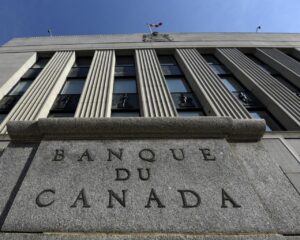Despite the fastest monetary tightening cycle in the country’s history, the Canadian economy is still running hot, which forced the central bank to crank its key interest rate even higher to a 22-year high of 4.75% last week.
Analysts are betting on another rate hike in July, to help the Bank of Canada bring inflation back down to its 2% range. Here are some factors that are keeping demand robust in the Canadian economy.
Extended Mortgage Amortizations
Many of Canada’s major banks allowed holders of variable-rate mortgages to extend their amortization period in order to keep their payments at nearly the same level, temporarily blunting the impact of higher borrowing costs.
As a result, higher borrowing costs have so far caused less financial stress for home buyers than they had expected, so the market has not seen a spike in supply from forced sellers.
That has partially helped the recovery in home prices, which have jumped 17% in the three months since January, after a year-long slump.
“It’s really something that has been a game changer in terms of how monetary policy is transmitted to the economy,” said Randall Bartlett, senior director of Canadian economics at Desjardins.
“A lot of households have been able to continue spending in a way that they wouldn’t otherwise be able to, and to stay in their homes in a way that they wouldn’t otherwise be able to.”
Canadians are Splurging Post-Pandemic
Canadian consumers have been splurging on interest-rate sensitive sectors including durable goods like furniture and appliances, despite a 1% decline in disposable income in the first quarter, drawing down their pandemic savings. The savings rate has halved to 2.9% in the first quarter from the fourth quarter of last year, Statistics Canada said.
“It seems like a lot of Canadians are looking to catch up on experiences that they weren’t able to have for a couple of years,” like travelling and eating out, Bartlett added.
Canadian Government Fiscal Policy
To offset the impact of inflation, which peaked at 8.1% last year, the federal and provincial governments have passed affordability measures, such as a federal C$2.5 billion ($1.9 billion) one-time grocery rebate for low earners that was in this year’s budget.
Provinces have enacted a number of different measures, including cutting taxes on fuel. Provincial stimulus measures are estimated to total about C$12 billion in fiscal year 2023-2024, Bartlett said, compared with more than C$20 billion in mid-2022.
Taken together, “they all exacerbate inflation when you’re in an environment of excess demand,” Bartlett said. But he estimated it will add “much less” than one-tenth of a percentage point to inflation this year.
The central bank says the fiscal spending is not adding to inflation, but it is not helping bring it down either.



